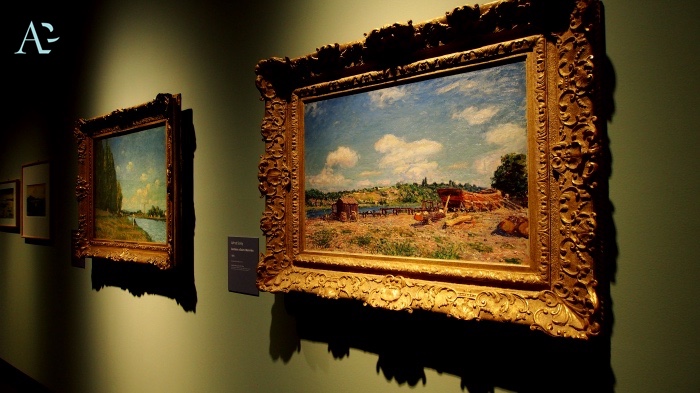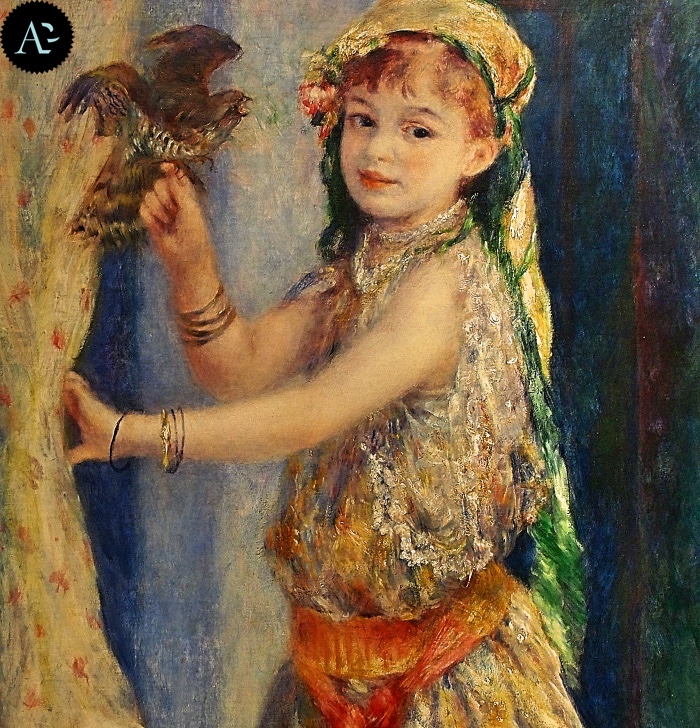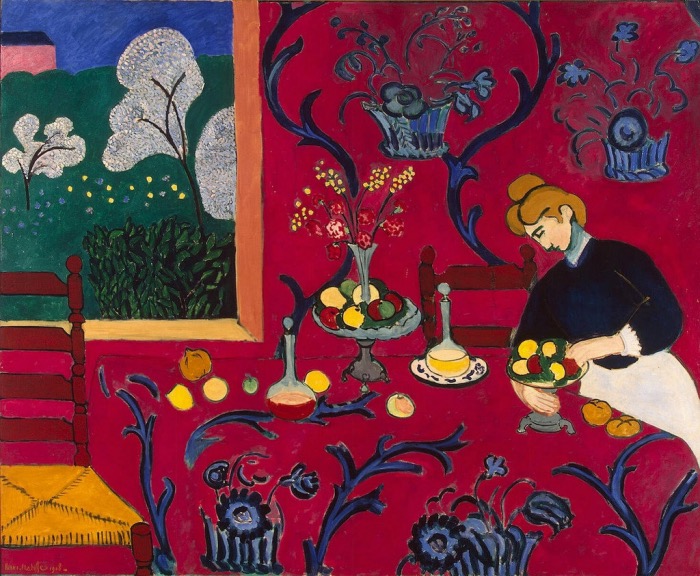
Have you ever wanted to take a trip back in time and immerse yourself in the era when art and culture exploded in a whirlwind of unparalleled creativity? Well, get ready to discover the main artistic currents that characterised the extraordinary Belle Époque.
This period, from the end of the 19th century to the beginning of the 20th, witnessed an explosion of innovation and cultural transformations that shaped the artistic world in astonishing ways.
The main artistic currents of the Belle Époque

Pierre-Auguste Renoir, Mademoiselle Fleury in costume algerino (1882).
The Belle Époque, literally ‘beautiful era’ in French, was a period characterised by unbridled optimism, rapid technological advances and unprecedented artistic fervour.
During this period of relative stability and prosperity, art experienced a series of currents that left an indelible mark on cultural history.
Here are the main artistic currents that characterised this era.
IMPRESSIONISM: THE REVOLUTION OF LIGHT AND COLOUR
One of the most iconic movements of the Belle Époque was Impressionism. Artists such as Claude Monet, Edgar Degas and Pierre-Auguste Renoir revolutionised the very concept of painting, capturing the effect of natural light and the play of colour on canvas.
Their works, often painted outdoors to capture the fleeting moment, captured the atmosphere and emotions of the moment.
SYMBOLISM: THE ART OF THE SOUL AND THE UNCONSCIOUS
In contrast to Impressionism, Symbolism focused on the interiority of the artist. This current embraced art as a vehicle to express deep emotions, dreams and visions of the unconscious. Symbolist artists such as Gustave Moreau created intricate and symbol-laden works, opening the door to personal and mystical interpretations.
ART NOUVEAU: THE SYNTHESIS OF ART AND CRAFTSMANSHIP
With a predilection for ornamentation and the organic nature of forms, the Art Nouveau movement created a synergy between art and craft. Coloured glass, floral designs and sinuous lines became the hallmarks of this current, which embraced the idea of ‘total art’, uniting all artistic disciplines.
FAUVISM: THE EXALTATION OF PURE COLOUR
Fauvism exploded onto the art scene as an explosion of colour and vitality. Fauves artists, such as Henri Matisse, adopted bold, non-naturalistic colours to express intense emotions. This movement challenged artistic conventions and paved the way for abstract art in the 20th century.

La stanza rossa di Matisse
The major artistic currents of the Belle Époque marked an era of extraordinary artistic diversity. From Impressionist landscapes to Symbolist introspection, from the sinuous elegance of Art Nouveau to the vibrant explosion of Fauvism, each current helped shape the artistic landscape of the era.
To explore these currents is to embark on a journey through innovation, individual expression and the affirmation of beauty in all its forms.

